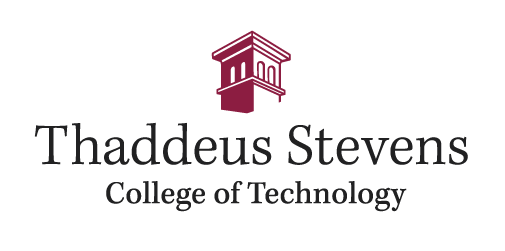Graphic Communications & Printing Technology Schedule & Curriculum
MODEL SCHEDULE FOR GRAPHIC COMMUNICATIONS & PRINTING TECHNOLOGY
SEMESTER 1
GRPH 116 Introduction to Desktop Publishing 4
GRPH 120 Digital Photography 3
GRPH 126 Printing Processes I 4
CIS 111 Intro to Computer Applications 3
ENG 106 English Composition 3
SEMESTER 2
GRPH 150 Intro to Lithography 3
GRPH 155 Intro to Screen Printing 3
GRPH 160 Graphic Communications I 3
GRPH 165 Multimedia and Web Design 3
Math 111 Business Math(or higher) 3
ENG Elective ENG 216 or ENG 221 3
SEMESTER 3
GRPH 207 Bindery and Finishing 3
GRPH 222 Graphics Communications II 3
GRPH 214 Print Marketing 3
GRPH 228 Printing Processes II 3
CIS 211 Microsoft Excel 3
Humanities Elective 3
SEMESTER 4
GRPH 262 Color Theory 3
GRPH 267 Graphics Communications Studio 3
GRPH 258 Advanced Lithography 3
GRPH 272 Web Design 3
ADDITIONAL GENERAL EDUCATION REQUIREMENTS
ELECTIVE General Education Elective 3
ELECTIVE Science Elective 3
HEAL Elective HEAL 106 or HEAL 111 1
TOTAL CREDITS 72
Click here to download PDF version of Graphic Communications & Printing Technology's Curriculum
GRPH 116 (4 credits)
Introduction to Desktop Publishing
Introduction to the hardware and software used in desktop publishing. Topics include graphical user interface and current industry uses such as design, layout, typography, illustration, and imaging. Students receive hands-on training in the computer environment using current production software. Basic scanning techniques are demonstrated.
GRPH 120 (3 Credits)
Digital Photography
This course covers basic digital camera use through practical application. The assignments center on composition, lighting, and the use of digital photography within the graphic communications industry. Color theory and digital manipulation allow students to integrate their digital photographs into page layout and graphic design concepts.
GRPH 126 (4 credits)
Printing Processes I
Covers the various printing processes including offset, screen, flexo, and gravure. Career opportunities, salary potential, and the role each process plays in the industry today are also discussed. Safety procedures and operations are identified. Upon completion, students should be able to demonstrate an understanding of the major characteristics, advantages, and disadvantages of each process.
GRPH 150 (3 credits)
Introduction to Lithography
This course introduces students to the basic fundamentals of lithography. Through practical application, students develop a working knowledge of this printing process with a strong concentration into multi-color image reproduction and image registration. Prerequisite: GRPH 126; minimum grade of “C” required
GRPH 155 (3 credits)
Introduction to Screen Printing
This course introduces students to the basic fundamentals of screen printing. Through practical application, students develop a working knowledge of this printing process with a strong concentration into multi-color image reproduction and image registration. Prerequisite: GRPH 126; minimum grade of “C” required
GRPH 160 (3 credits)
Graphic Communications I
Covers the history, development, and commercial applications of printing processes. Students learn about the curriculum and the industry including its processes, products, and careers. Emphasis is placed on the attributes which are most desirable for successful entry and advancement.
GRPH 165 (3 credits)
Multimedia and Web Design
Introduces the fundamentals of design and production for presentations and the World Wide Web. Basics of hypertext markup language (HTML), the use of authoring software, and making portable data format (PDF) documents for internet downloads and multimedia basics are covered. Prerequisite: GRPH 120; minimum grade of “D” required
GRPH 207 (3 Credits)
Bindery and Finishing
Bindery and finishing is an increasingly important part of the printing process as it can provide unique physical characteristics to a finished product. Students develop an understanding of both the physical processes of bindery and finishing, along with understanding the creative application and added value these processes can provide to a final piece. Along with theory, students have the opportunity to operate folding equipment, produce die cuts, and create varnishes
GRPH 222 (3 Credits)
Graphic Communications II
This course provides an overview of the history of graphic communications, along with an in-depth analysis of what graphic communications is and how it reflects culture. Typography is a primary focus in this course. Students are challenged to develop creative solutions to problems using different techniques for developing ideas. Prerequisite: GRPH 160
GRPH 214 (3 Credits)
Print Marketing
Commercial printers no longer simply provide a printed piece. They provide various solutions to communicating messages through different techniques along with the management of data. This course looks at how print is used to connect companies to consumers through trends in marketing
GRPH 228 (3 Credits)
Printing Processes II
In a continuation of GRPH 126, the major printing processes are discussed in greater detail, primarily offset printing. Students are introduced to multiple unit-offset
GRPH 262 (3 Credits)
Color Theory
Color theory is the study of the science of color and light as it relates to the printing industry. Several color spaces are discussed, along with the usage for each. A focus is placed on managing color within the printing industry by means of devices, software, and techniques.
GRPH 258 (3 Credits)
Advanced Lithography
In this course, printing standards and quality control metrics for process color printing are examined. Students continue to expand their knowledge of the inner workings of an offset press using a press simulator program. The use of printing in marketing is also discussed. Prerequisite: GRPH 228
GRPH 267 (3 Credits)
Graphic Communications Studio
Communication skills are challenged to create unique solutions for a host of design problems. Emphasis is placed on the design process and working with others to craft a message. The course ends with a cumulative capstone project tasking students to design and produce several products. Students are also tasked with the creation of a portfolio. Prerequisite: GRPH 222
GRPH 272 (3 Credits)
Web Design
The primary languages needed for web development, HTML
and CSS, are introduced along with how to design for the web.
Prerequisite: GRPH 165
